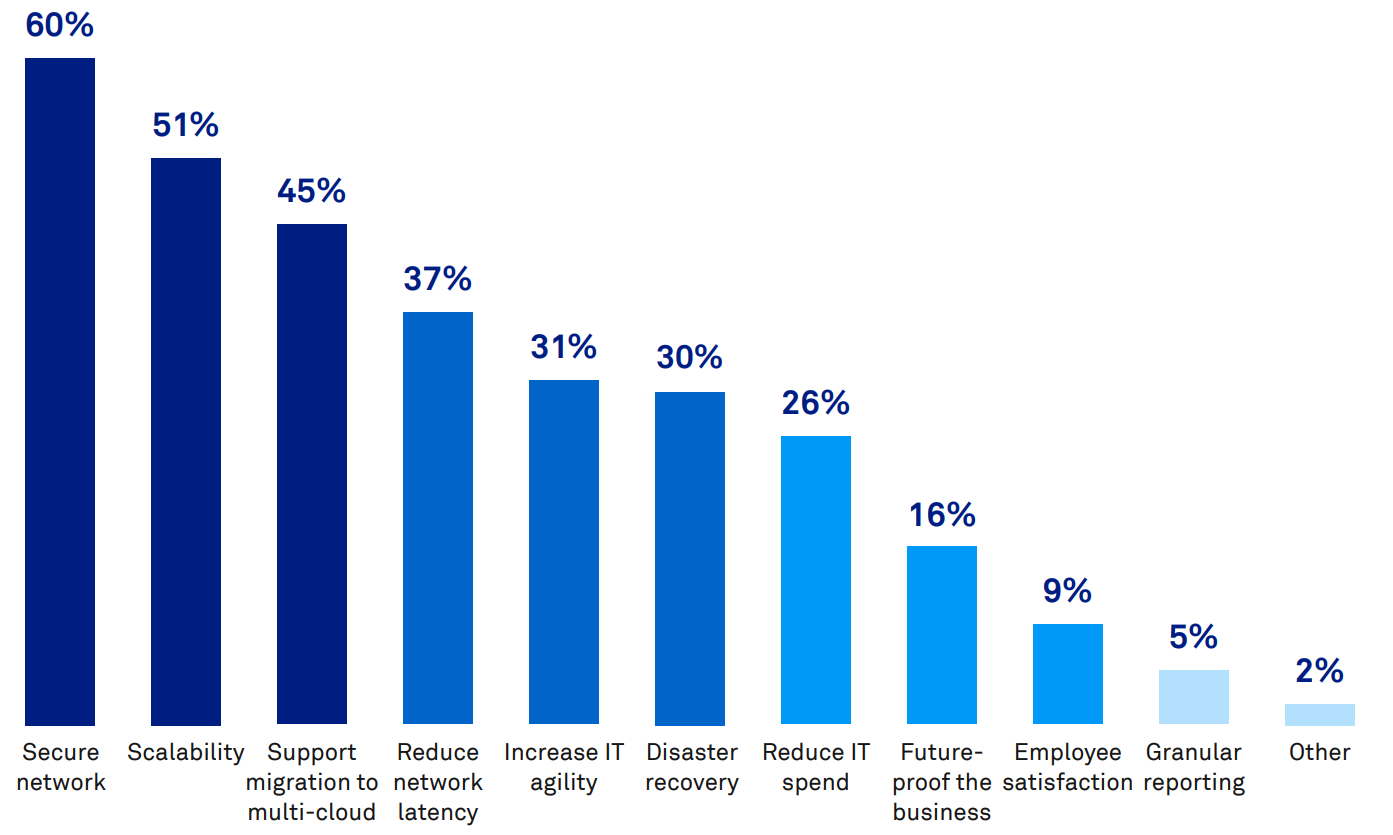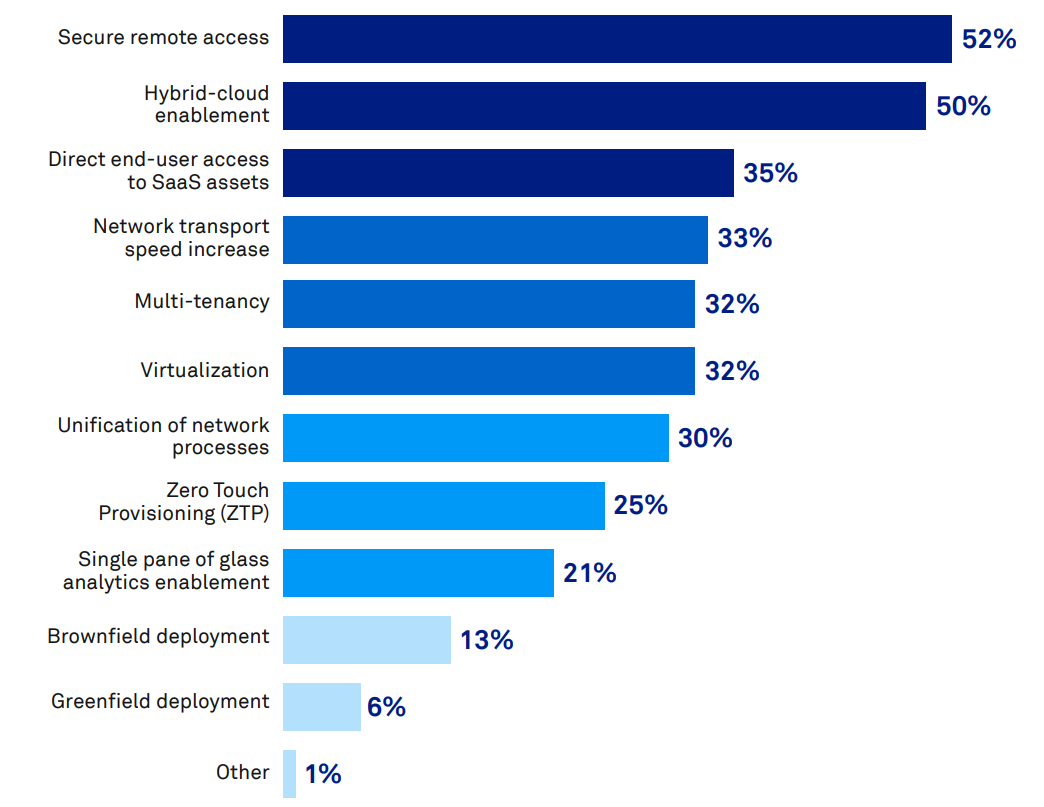How SD-WAN and adaptive networking are helping enterprises rethink network strategies

With every business now a connected business, today’s flexible workforce relies on network connectivity. The increasing number of remote and hybrid workers – combined with the fact that customers, employees and suppliers are now located anywhere – have forced enterprises to rethink their network connectivity strategies, based on demand, user needs, and network security and bandwidth optimization.
Organizations of all sizes have, in many cases, started to consider (if not use) an array of established and emerging technologies such as automation, artificial intelligence and machine learning, robotics and the Internet of Things (IoT). Another one that is gaining a lot of traction more recently is adaptive networking, which has a foundation in software-defined wide area networks (SD-WAN).
As organizations pivot based on how they plan to conduct business in the future, many are looking at network transformation that enables on-going flexibility. Adaptive networking, will play a leading role in this transformation.
Telstra and Pulse recently surveyed more than 150 information technology (IT) decision makers to understand their rates of SD-WAN adoption, the perceived benefits of deployment, the top use cases and technical objectives for SD-WAN and why IT leaders might choose one SD-WAN product over another offering. So, what did we find out?
What IT decision makers are saying about SD-WAN
Network optimization is essential for enhanced end-user experiences, employee productivity and business cost reductions. It can also minimize latency and delay, increase network uptime, handle more traffic and affect a range of other factors.
For those reasons, SD-WAN has emerged as an attractive solution for provisioning and optimizing distributed IT networks. SD-WAN uses the internet to send traffic between networks, controlled by centralized software, or to provision new networks at the edge.
Not sure where you are in your SD-WAN journey? Take our quiz to find out.

What are the top 3 business cases for SD-WAN deployment?
Arguably, the most interesting results from the research were the top three business cases for SD-WAN deployment. Of all the respondents, 60% prioritized securing their networks, followed by enabling scalability (51%), and then supporting migration paths to multi-cloud platforms (45%).

What are the main technical objectives for SD-WAN?
Overall, these mostly align with the respondents’ main technical objectives for deploying SD-WAN: secure remote access (52%), hybrid-cloud enablement (50%) and direct end-user access to SaaS assets (35%).
Markets and supply chains are becoming more dynamic in the new digital world. Digital transformation has fundamentally changed the way companies operate and deliver value to customers. This new reality has influenced IT leaders in how they need to respond to business needs and implement new network infrastructure. By having centralized network orchestration and management in the cloud, organizations can be agile enough to activate new locations and implement global network changes with minimal effort by leveraging SD-WAN Zero-Touch Provisioning.
Those new networks require great flexibility to match connectivity with new, sophisticated application requirements and greater video consumption. Through the transport agnostic characteristics of SD-WAN and multiple link aggregation, organizations can be more flexible and responsive to bandwidth demands at any point in the network.
At the same time, when organizations move from a traditional on-premises infrastructure to a more cloud-centric SaaS model, the access to prime bandwidth over the Internet becomes critical in terms of guaranteeing quality of experience (QoE). That is why SD-WAN also offers a set of traffic management and bandwidth optimization mechanisms, such as application awareness, class of service, continuous monitoring, per-packet application steering, sub-second failover, link remediation and business policies and rules, which take into account real-time performance of the WAN links to provide application assurance across any transport link.
As multi-cloud environments are replacing proven cohesive legacy IT infrastructures, for the transition to be successful, organizations must ensure their applications can integrate seamlessly with the different services delivered by their preferred cloud service providers. Having the ability to establish direct and secure private connections to the cloud with a close proximity to on-ramp locations is critical to reducing latency and increasing the performance of those applications. SD-WAN offers businesses the ability to connect to public clouds securely and directly, bypassing the public Internet to improve performance and reduce network cost.
One of the main challenges for organizations when adopting a cloud model is extend the reach of their security controls outside the perimeter of their legacy data centers. Managed SD-WAN solutions enable customers to implement a Zero Trust Access (ZTA) approach for remote locations that lets workers comply with their security posture.
Network challenges are often a key issue when organizations decide to move to the cloud, especially if their new application needs have outgrown their existing legacy WAN’s capabilities and bandwidth.
Telstra is uniquely equipped to help a company’s network be as agile as possible. Our connectivity, software-defined services, and professional consultation capabilities create a secure environment with the levels of flexibility and control that organizations need to manage change.
Additional key findings about SD-WAN adoption
The research also revealed a range of actionable insights regarding the state of SD-WAN deployments, organizations’ plans, and expected benefits, among others:
- Sixty one percent of respondents are currently deploying SD-WAN.
- For those not currently deploying SD-WAN, 53% have plans to do so within the next 12 months.
- More than half (51%) of leaders believe SD-WAN deployment can reduces costs.
- Intelligent automation (62%), network automation (53%), and advanced security protocols (49%) are the most desirable SD-WAN features to IT leaders.
- Eighty-seven percent of decision makers believe that SD-WAN vendors will deliver on the promises they make with their products.
Download the full report here.
How Telstra is delivering adaptive networks technology
Telstra’s adaptive networks platform can deliver speed to market, business continuity, visibility and control, and competitive edge — offering organizations more choice across three key components:
· Adaptive connectivity, consisting of WAN services like Internet, IPVPN and cloud interconnect
· Adaptive architecture, which includes SD-WAN, network-on-demand and security
· Adaptive technology services with professional consulting services and managed network services.
Of course, this is more than just a new type of network technology. Every organization has different needs, different resources, different timelines for transformation and, as always, different budgets. Therefore, the answer to “When is the right time for me to start considering SD-WAN for my business?” will also always be different. It can vary based on such factors as the pace of company expansion or the number of company sites.
Not sure where you are in your SD-WAN journey? Take our quiz to find out.
Ultimately, making the right decision can and should involve engaging a trusted partner with the right network expertise to help organizations choose the right technologies, understand what they need, or don’t need, and make the most use of their budgets and resources.
Learn more about Telstra’s Adaptive Networks technology here or chat with one of our networking experts to find out how we can help with your business.